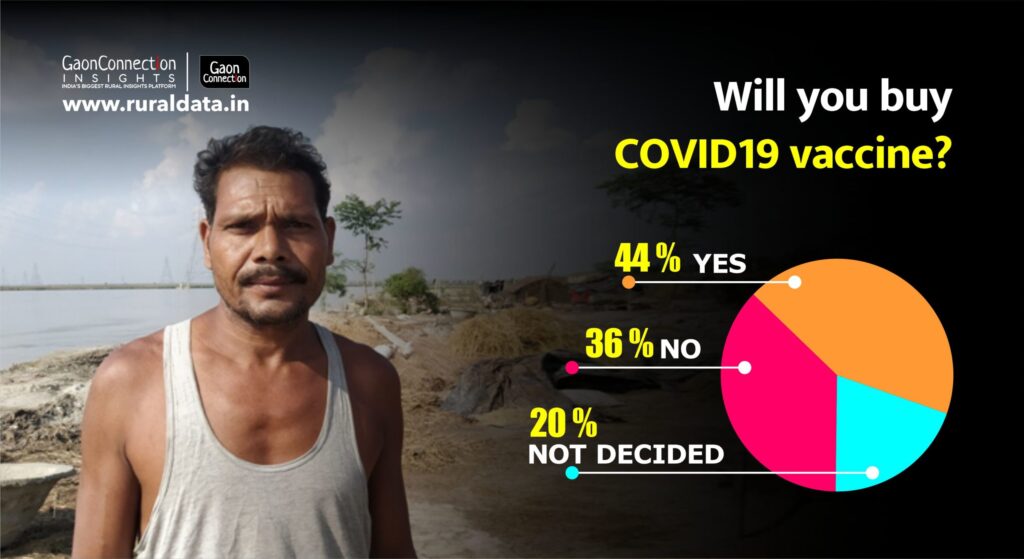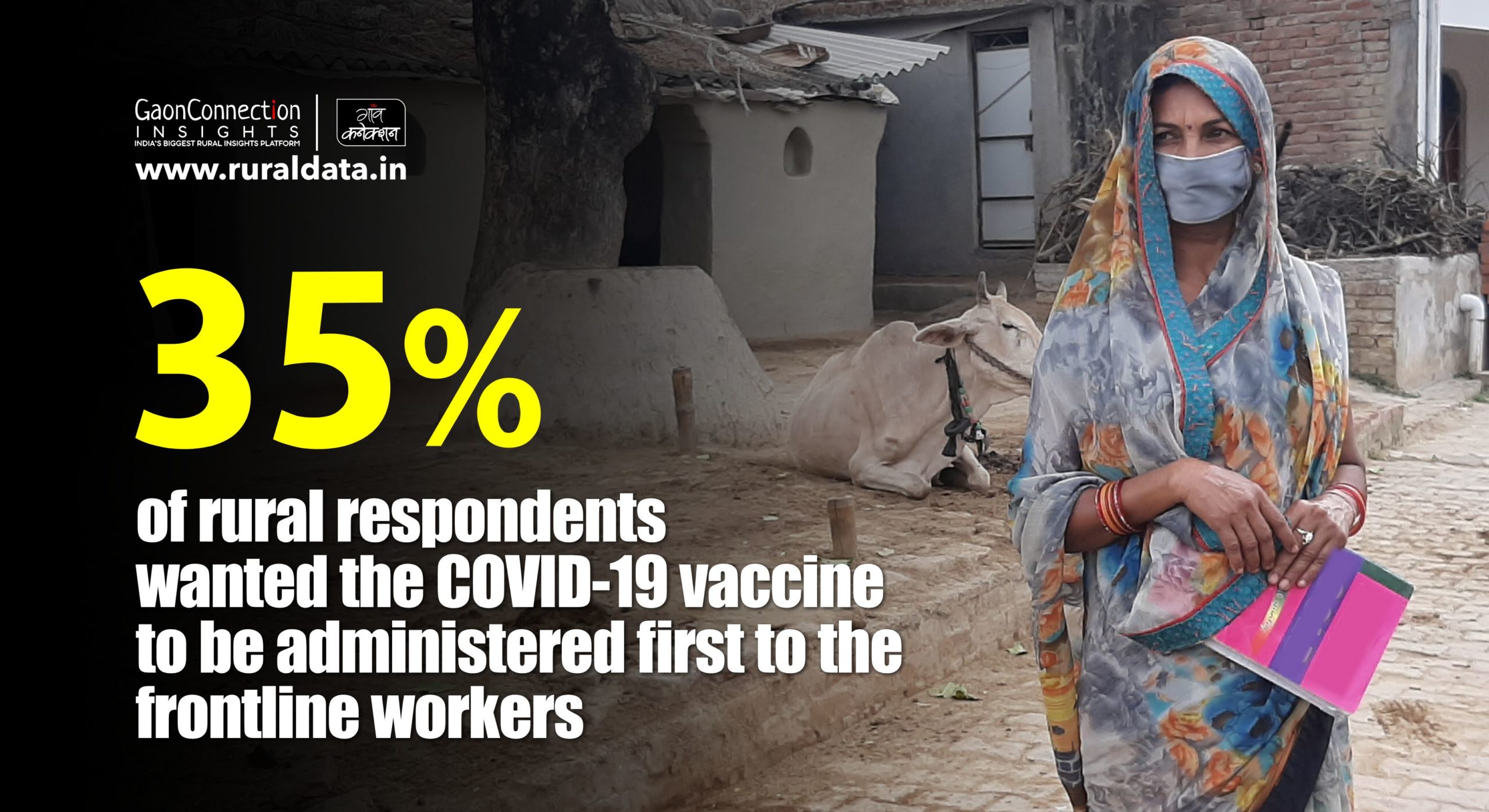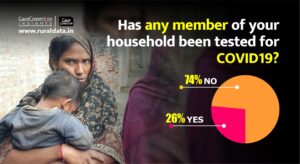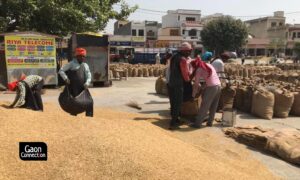Slightly more than 43 per cent of rural Indians surveyed across 16 states and one union territory said that doctors and nurses should receive the COVID-19 vaccine on a priority basis. For 35 per cent of rural respondents, the topmost priority was vaccinating the frontline workers, such as ASHAs and anganwadi workers, while 34.7 per cent felt sanitation workers should be administered the vaccination first. Meanwhile, 31.7 per cent of the respondents also said that police personnel should get the vaccine first.
These are among the key findings of the first of its kind survey on the perceptions of rural Indians around the coronavirus vaccine by Gaon Connection Insights, the data and insights arm of India’s biggest rural media platform Gaon Connection. The survey, released as ‘The Rural Report 3: COVID-19 Vaccine and Rural India’ and available in full for a free download on www.ruraldata.in.
The face-to-face survey, conducted between December 1 and December 10, last year, was carried out by Gaon Connection surveyors among 6,040 rural respondents across 60 districts in 16 states and one union territory. The selection of states, covering all regions of the country, was based on the prevalence of COVID-19 as per the COVID data of the Union ministry of health and family welfare, Government of India.
The survey had a margin of error of 5 per cent and a 95 per cent confidence level.

“It is important for doctors and nurses to be vaccinated, but other frontline workers should be given the vaccination on priority as they work without any safety gear,” Shashi Yadav, chairperson of ASHA Workers’ Association of Bihar and a resident of Patna, told Gaon Connection. She felt since ASHA workers like her came into contact with a range of people during the pandemic, they courted more danger of contracting COVID-19.
“I think the government will also try to administer the vaccine first to the ASHA workers because they are going to mostly power the vaccination drive. This whole year, despite poor or no remuneration, these frontline workers have unflinchingly worked round the clock to provide every information sought by the health department,” she added.
Reiterating Yadav’s words, Veena Gupta, state president of ASHA employee’s union in Uttar Pradesh, told Gaon Connection, “The government must ensure that the frontline workers are vaccinated,” she said. “Only ASHA and anganwadi workers will be able to encourage people to get vaccinated,” she added.
“We were told that the vaccination drive would begin in the first week of January this year, and ASHA workers would be the first to get the vaccine,” Sarabjit Kaur Machaki, ASHA Sangini from Faridkot district, Punjab told Gaon Connection. She added that many ASHA workers had apprehensions about the vaccination, but had to go through with the shot nevertheless as the government had ordered it.
“Only when we are vaccinated, can we motivate the people of the village to receive the shot,” said Machkai who heads the Democratic Mulazim Federation, an association of ASHA workers with 22,000 members in Punjab.

Meanwhile, the survey also tried to find out the willingness and financial capability of rural Indians to pay for the vaccine Of the 6,040 respondents surveyed by Gaon Connection, 44 per cent said they were willing to pay for the COVID-19 vaccine, while 36 per cent of them wanted it to be provided free. Of those willing to pay for the vaccine, more than 66 per cent wanted the vaccine to cost less than Rs 500 while 25 per cent were willing to spend between Rs 500 and Rs 1,000 for two doses of the vaccine.
About six per cent of them were willing to spend between Rs 1,000 and Rs 1,500; and two per cent said they would be willing to pay between Rs1,500 and Rs 2,000 for the vaccine. Only half a per cent were willing to spend more than Rs 2,000 for the vaccine.
In the Gaon Connection survey, states covered under the north zone include Uttar Pradesh, Bihar, Jharkhand, Himachal Pradesh, Punjab, Jammu and Kashmir, Haryana. States in the south zone include Kerala, Andhra Pradesh, Karnataka. The west zone includes Maharashtra, Gujarat, Madhya Pradesh; whereas the east-northeast zone includes Odisha, Assam, West Bengal, Arunachal Pradesh.



















